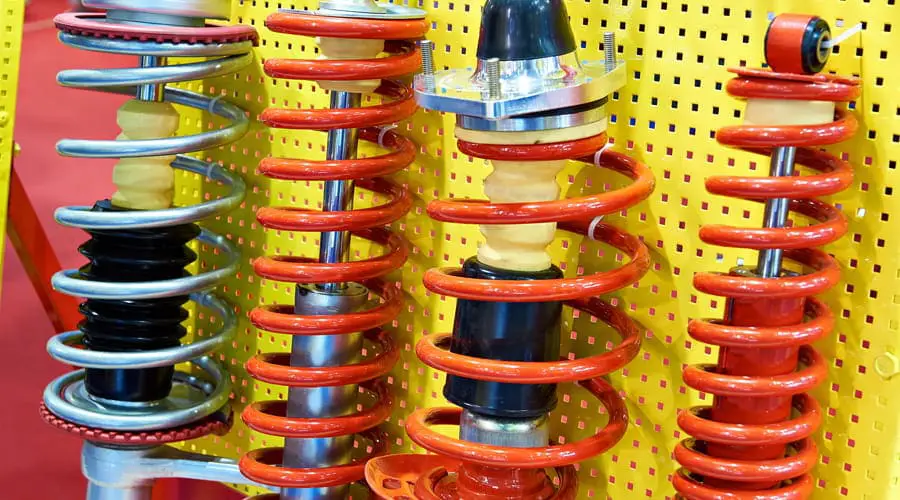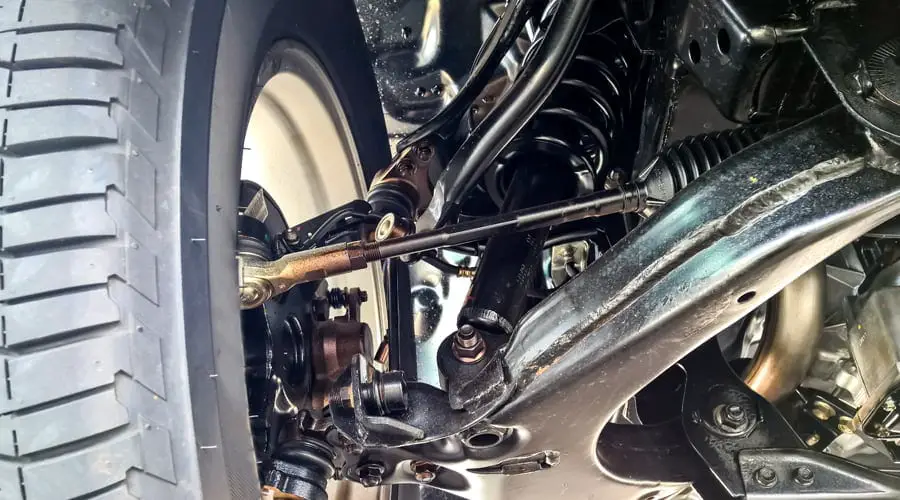
Source: canva.com
Very few people would walk into a dealership to buy a car and think to ask about what the suspension design of a car is before buying it. It is just as important as other parts of a vehicle but we don’t often ask about it. Understanding how a vehicle suspension works is important as it is a critical part of making sure your ride is comfortable and has consistent handling and braking ability.
Suspension Systems
You need a good suspension system to make sure your car tires stay solidly on the ground, especially when cornering at high speeds. A working suspension stops a car from rolling. A suspension that needs some work done has a higher bounce rate which means shocks won’t absorb impact properly and the springs may not respond in time to keep tires grounded. Along with increased bounce rate and poor handling, a poorly maintained suspension system makes sounds of clunking when going over bumps. The suspension not only lets you ride in comfort but offers safety and stabilization of vehicles.
Types of Suspension Systems
The parts of a suspension are made up of springs (coil or leaf), links/arms, and a shock absorber. There are different types of setups for these systems. The suspension is either dependent or independent. The dependent system has a bean or axle that links the right and left wheel so they work together. It can also be sprung by leaf springs or coil springs with shock absorbers. Suspensions are not complicated and are reasonable in price. The types are as follows:
1. Torsion Beam
This type of suspension is also known as a twist-beam suspension. It is a simple design that’s cheaper to produce. Torsion beam suspensions tend to be at the rear of a car and use trailing arms that are connected with a cross member that twists when the wheels are in motion and move. This suspension is compact and allows more room in the vehicle. While it isn’t expensive to make, it is a solid suspension to have and often used in small size sedans and some hatchbacks since it is more affordable.
2. Live Axle
This suspension is a driven solid axle. It sends power to the wheel. When live axles are the rear suspensions, they are usually on buses, light trucks, and some medium-duty SUVs and pickups. It can be sprung with either coil or leaf springs and is more rugged than torsion so it can deal with heavier load maximums.
3. Independent Suspension
This suspension does not have a bar connecting the two wheels. Instead, each wheel has its own spring and shock combo allowing for a comfortable ride. If one wheel hits a bump or pothole, it won’t affect the other. One wheel moves and the other stays on the ground. These types of suspension can be used in both the front and rear of a vehicle but tend to be used in the front axle more often.

Source: canva.com
Types of Independent Suspensions
When looking at independent suspensions, there are a few available on the market. Here are three of the most common.
1. MacPherson Strut
This suspension uses a substantial compression link or wishbone that is kept stable by a second link. It’s like a shock absorber built inside a coil spring and often used in front-wheel drive vehicles and is really cost-effective as it has minimal parts making it easy to manufacture and use. Macpherson is one of the most common types of suspension. It is simple, doesn’t take up a lot of space, and is a great option for smaller vehicles. Because it doesn’t have an excessive number of suspension parts, it is also easy to troubleshoot if you are having issues.
2. Double Wishbone
This is a suspension with two wishbone type arms connected to a wheel. Each of the arms has a different spot it is mounted. One is at the wheel and the other is at the frame of the vehicle. This wishbone is somewhat the same as the MacPherson strut’s wishbone. Both have coil springs as well as shock absorbers. There are various types of double wishbone suspensions but this overview gives you the basics of what they are.
The bonus of this type of suspension is it increases the negative camber because of the vertical movement of both the upper and lower arms. The outside wheel of the vehicle has as much road contact as possible when cornering, allowing for an anti roll grip and better overall handling. When your vehicle corners, the wheel stays perpendicular to the ground allowing for maximum contact for better driving.
3. Multi-Link Suspension
This system is more complex than the links of the double-wishbone because it uses at least three lateral arms and one that is longitudinal. It’s the pricier of the three systems and quite complex in its design. Despite its cost and complexity, though, it is used quite often in modern vehicles that have the MacPherson in the front and the multi-link in the rear. It tends to be on a higher-end chassis rather than a budget one. The multiple links allow the suspension to move freely to cover every angle and wheel alignments. They are often used in off-road vehicles as well as sedans and sports cars.
Final Thoughts
Working knowledge of what a well-maintained suspension does means you are aware of how it should be working and how your car should be performing. It also helps to know about suspension components so you can understand the drivability of your vehicle and what it can handle. A suspension system meant for everyday driving is not the same one you want if you are going off-roading on a regular basis. Knowing the difference between suspension lift kits helps you keep your ride in good shape.